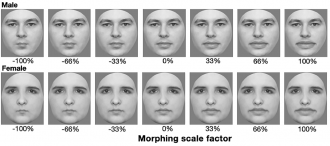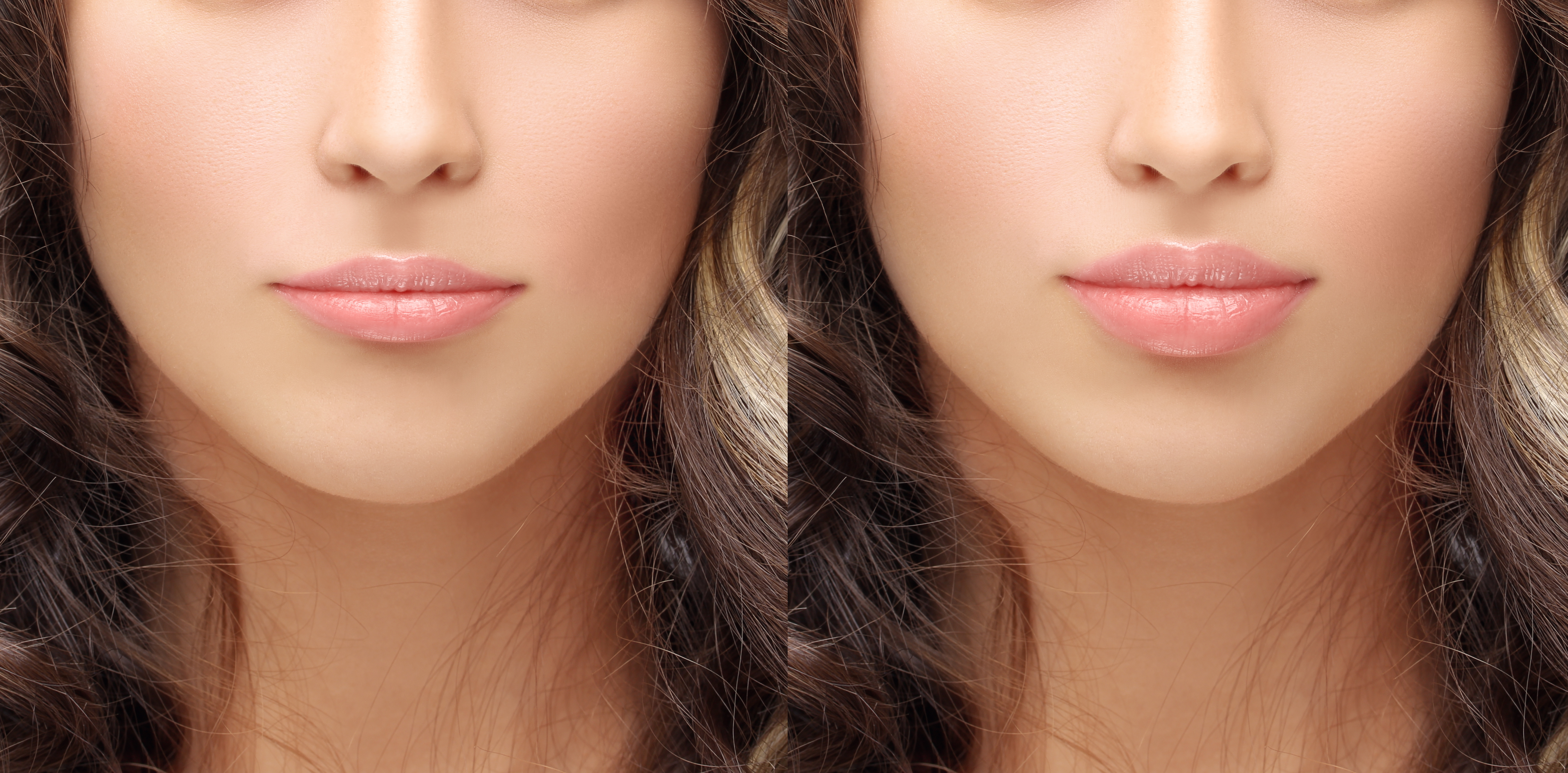Media release
From:
A new study by psychologists has shed light on the way lip size could influence perceptions of facial attractiveness.
Led by Professor David Alais in the School of Psychology at the University of Sydney, researchers have uncovered gender-specific biases and the potential influence of cosmetic procedures on Western perceptions of beauty.
The study used digitally created images (above) to display altered lip size on both male- and female-appearing faces and asked participants to rate their attractiveness. The results showed a difference in preference for lip size that was dependent on recent experience and some surprising gender differences.
The findings are published today in the Proceedings of the Royal Society B.
Main findings
- Overall findings: Pooling all observers, the highest ratings were for male images with thinner lips and female images with plumper lips.
- Gendered preferences: Female participants showed an even stronger preference for plumper lips when viewing images of female faces, while male participants preferred female faces with unaltered lips. This suggests that attractiveness judgments are shaped by the observer's own gender.
- The adaptation effect: Exposure to a face with lips altered to be plumper or thinner influenced subsequent attractiveness judgements of new faces. Exposure to plump lips led to future higher ratings for faces with plump lips, and exposure to thin lips led to future higher ratings for thin-lipped faces. Psychologists have seen this adaptation effect influence visual preference for a range of stimuli, from art to food preference.
- Lips in isolation: Interestingly, the study found that adaptation to lips alone, without the context of the whole face, also produced shifts in attractiveness ratings, suggesting that lip size is encoded by the brain as a distinct feature, separate from the overall facial structure.
In an image-conscious world, the easy availability of cosmetic surgery and injectables, plus the reinforcing role of social media platforms like TikTok and Instagram, have seen a boom in lip plumping to alter facial appearance.
Professor Alais said: “Motivated by these social factors, we set out to measure attractiveness ratings from a group of males and females for face images whose lips were manipulated over several levels of expansion or contraction.”
Implications for body image
Professor Alais, who specialises in visual perception and cognitive neuroscience, said the findings have potential implications for the growing popularity of cosmetic procedures, particularly lip augmentation. Not only do the results indicate that lip plumping may primarily appeal to women, but also that exposure to faces with artificially enhanced lip sizes could lead to “lip dysmorphia”, where one's perception of what is considered attractive shifts towards a new plumper norm.
“Our research highlights the subjective nature of beauty and the powerful influence of social and cultural factors,” Professor Alais said. “As cosmetic procedures become more accessible, it's crucial to understand how these interventions can shape our perceptions and potentially lead to unrealistic beauty standards.”
Method and results
Professor Alais, working with Associate Professor Jessica Taubert at the University of Queensland, recruited 32 students – 16 female and 16 male – for the experiments. The participants were shown images of a digitally manipulated proxy image for a human face with alterations around a ‘norm’.
Overall, participants were shown 168 faces, variations of the images above, representing seven lip sizes with lips thinner or plumper than the norm. Participants were given 1.25s to register how relatively attractive they found each image.
While the general results show participants thought slightly plumper lips were more attractive on the female face and slightly thinner lips more attractive on a male face, when disaggregated by gender, men preferred a female face with natural lip size image, with women preferring plumper lips.
Next steps
“While not directly part of this study, the results suggest a complex interplay between social conditioning and gender,” Professor Alais said.
“This study provides valuable insights into how people respond to facial features based on immediately prior as well as acculturated visual experience,” he said.
“Further research is needed to explore the long-term effects of cosmetic procedures on body image and the potential for visual adaptation to contribute to body dysmorphia.”
-
Alais, D. et al ‘Distortions of lip size bias perceived facial attractiveness’ (Proceedings of the Royal Society B, 2025) DOI: 10.1098/rspb.2025.0202
Data and code for the study are publicly available at this link.
Declaration
The researchers declare no conflicts of interest. David Alais and Jess Taubert receive research funding from the Australian Research Council.
Multimedia





 Australia; NSW; QLD
Australia; NSW; QLD


